![Early-November Foliage: Recommended Hidden Spots [Northern Area edition]](https://mktaxi-japan.com/kyoto/wp-content/uploads/sites/2/2025/10/紅葉穴場スポット18選-英語-1.png)
Early-November Foliage: Recommended Hidden Spots [Northern Area edition]
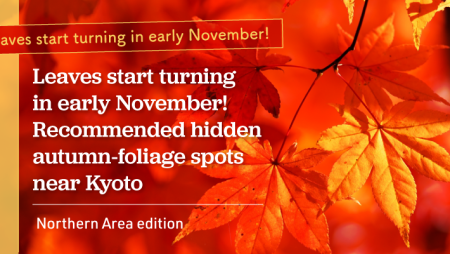
In the past, the best time to see Kyoto’s autumn leaves was around mid-November, but due to global warming, in recent years they often peak in late November.
Even if you’ve come all the way to Kyoto, in early November the foliage in the city center is usually only just beginning to change color.
So here are 20 recommended lesser-known spots in the Kyoto area that are already at their best in early November.
Even in Kyoto, these hidden spots don’t get crowded.
Experience Kyoto in early November and overturn the notion that “Kyoto’s autumn leaves = massive crowds”!
Because the 2025 foliage is running slightly later than usual, the spots introduced here are expected to be at their best roughly from early to mid-November 2025.
For recommendations of lesser-known autumn-foliage spots in Kyoto’s lowland city areas—such as Higashiyama and Arashiyama—that begin coloring as early as November, see here.
① Enryaku-ji Temple on Mount Hiei (elevation 848 m) 〈Sakyo Ward / Otsu City〉

Enryaku-ji Temple autumn-foliage highlights:
Spreading near the summit of Mount Hiei (848 m), Enryaku-ji Temple is a hidden gem where the autumn colors reach their best earlier than in central Kyoto.
Although the headline of this article says “colors begin in early November,” at Enryaku-ji Temple the leaves start to turn in October, with the peak in early November.
Around the Tōdō area at about 660 m elevation, a simple calculation puts the temperature roughly 4°C lower than in Kyoto City.
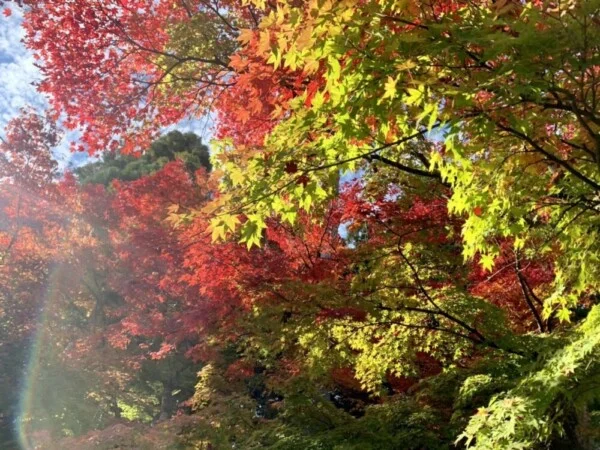
At Enryaku-ji Temple, it’s as if the seasons advance nearly 20 days earlier than in central Kyoto. Late November in the city corresponds to early November at Enryaku-ji Temple. By early November, the autumn foliage is already at its peak.

In Kyoto terms, although it sits slightly lower than Mount Atago, home to Atago Shrine, as a sightseeing autumn-foliage spot it’s a hidden gem that reaches peak viewing the earliest in Kyoto. Moreover, it’s not just that the leaves turn early—peaking in early November. Because the temperature swings are harsher than in central Kyoto, the maples greet you with a more vivid red than in the city.
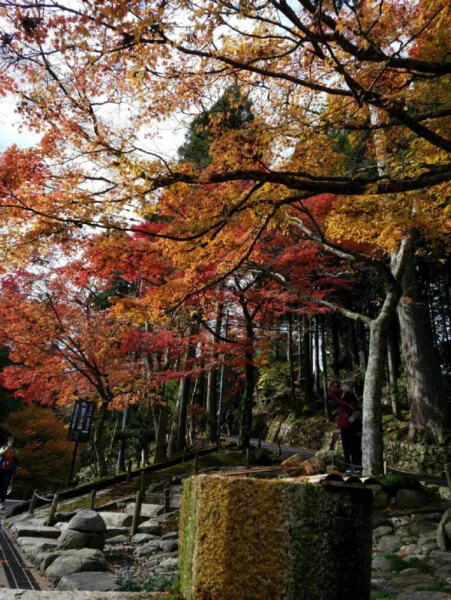
Famous founders of various Buddhist sects likely enjoyed the beautiful autumn foliage at Enryaku-ji Temple while spending their days in rigorous training. In the past, the peak season for the leaves may have been around late October rather than early November.
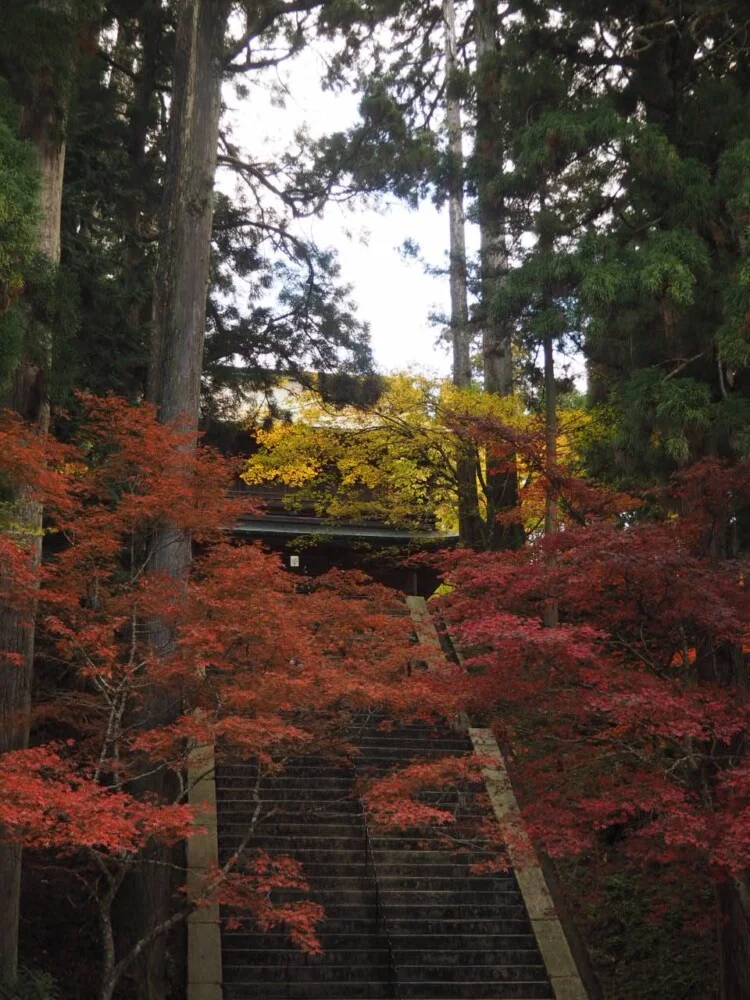
Access is available from both the Kyoto side and the Ōtsu side by cable railway and the like. In Yase on the Kyoto side and Sakamoto on the Ōtsu side, early November is admittedly a bit early for peak foliage, but the leaves have begun to turn. It’s also a hidden gem you can climb to on foot as a hike.

If you want to enjoy Kyoto’s autumn foliage a little early in early November, taking a taxi is recommended.
The viewpoints located at various spots along the Hieizan Driveway and the Oku-Hiei Driveway, which run around the peaks of Mount Hiei, also reach their best viewing period around early November.
With a casual drive, you can make the rounds of all three pagoda areas—Tōtō, Saitō, and Yokawa.
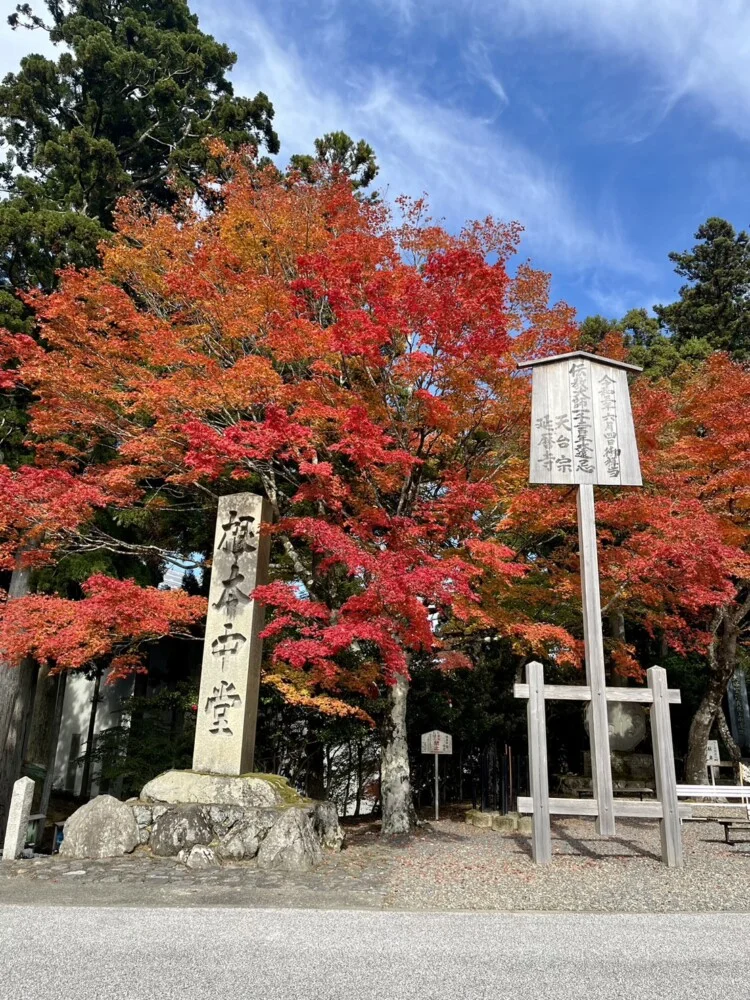
In Yokawa, the “Hieizan Autumn Foliage Festival” will be held from Saturday, November 1, 2025, to Monday (national holiday), November 24, 2025.
During the period, including early November, a free raffle will be held every day from 10:00 to 16:00, with chances to win original goods and more.
On Saturdays, Sundays, and public holidays from 10:00 to 16:00, a variety of food trucks will be on site.
During the festival period there will also be a special viewing of the Inner Sanctuary of Yokawa Chūdō.
Visitors will be able to view the Inner Sanctuary, which is normally accessible only to monks.
A Three-Pagoda Pilgrimage Ticket is required, but there is no additional admission fee for the special Inner Sanctuary viewing.
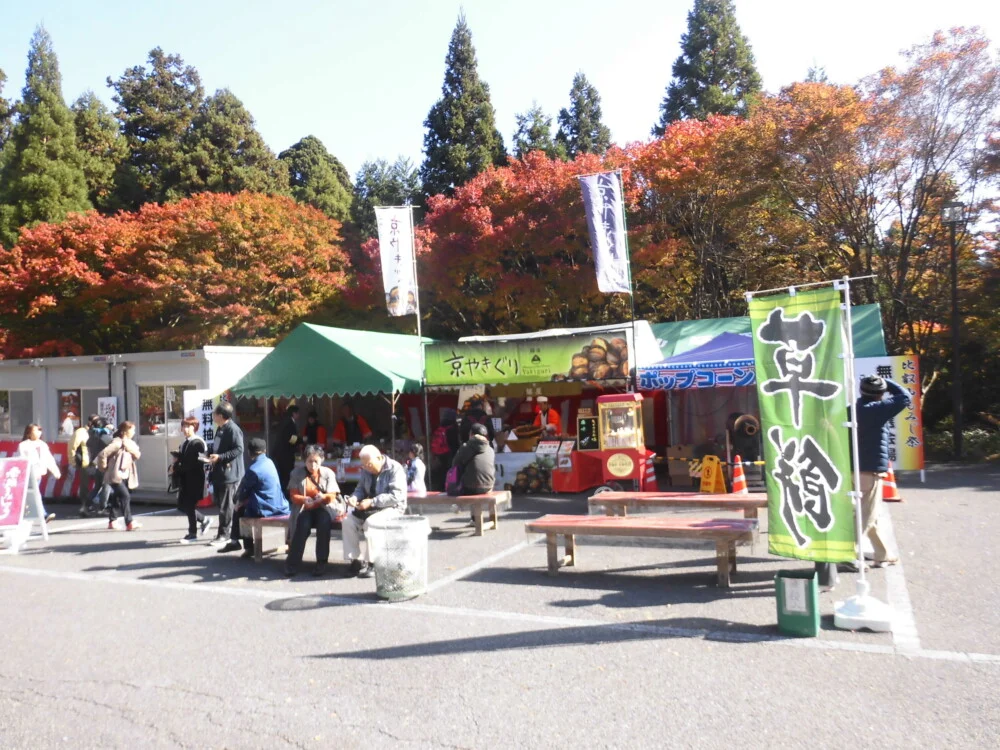
From Saturday, October 11 to Monday, December 8, 2024—including early November—the Kokuhōden (Hall of National Treasures) at Enryakuji Temple is holding its autumn special exhibition, the commemorative exhibition “Buddhism and Children” marking the designation of the Standing Statue of Gohō Dōji as an Important Cultural Property.
Various cultural properties are on display, including the “Standing Statue of Gohō Dōji,” which has newly been designated an Important Cultural Property.
Hidden-gem rating: C
Among the nearly 80,000 Buddhist temples said to exist throughout Japan, Enryakuji on Mount Hiei boasts outstanding name recognition. It may be a bit of a stretch to call it a “hidden spot.”
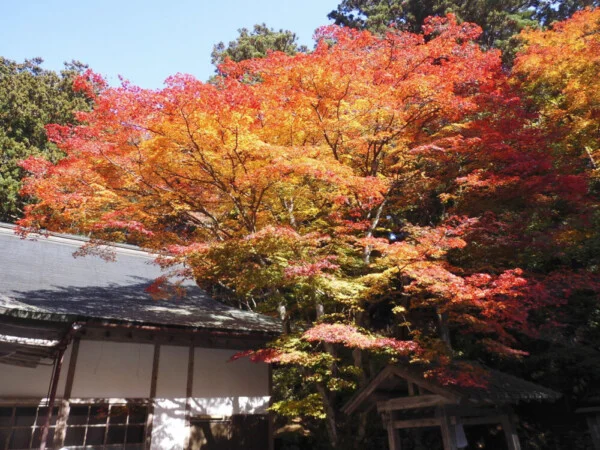
However, Enryakuji Temple is featured less often than you might expect in Kyoto autumn-foliage specials, so as a foliage spot it’s something of a hidden gem.
If you want to see leaves at their best in early November, Enryakuji on Mount Hiei is the best choice.
About Enryakuji on Mount Hiei
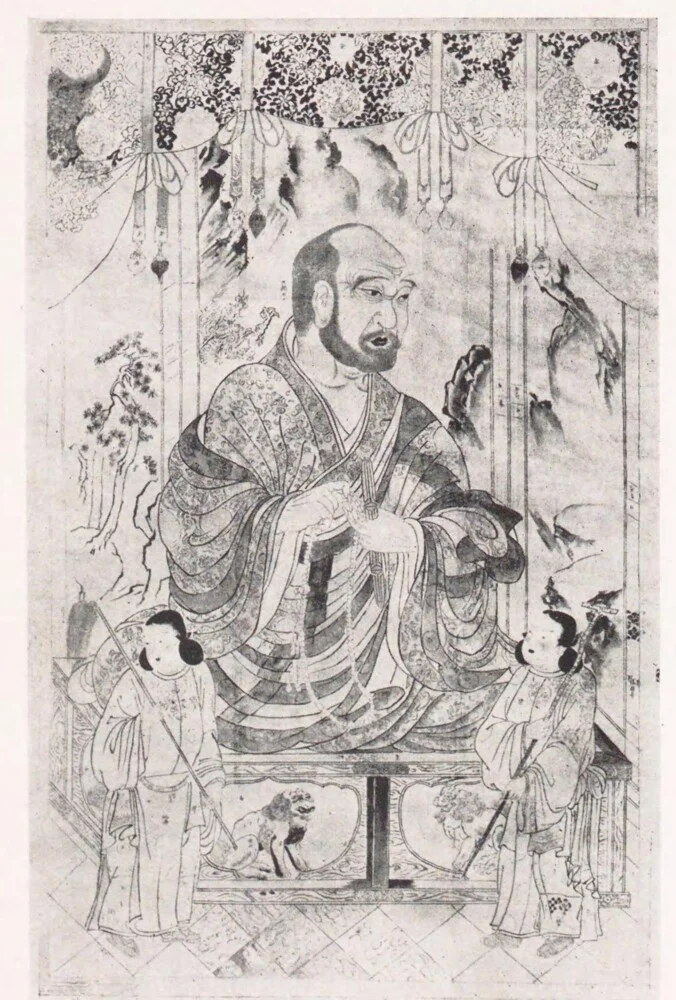
Ryōgen image “Kokushi Daizukan.” Source: National Diet Library Digital Collections.
So deep are the temple’s ties with Kyoto that in classical writings, simply saying “the Mountain” (yama) referred to Mount Hiei.
It long commanded great influence not only in Kyoto but nationwide; however, in Genki 2 (1571) it was subjected to an attack by Oda Nobunaga, and most of its buildings were destroyed.
The present temple complex was rebuilt thereafter.
Its broad precincts, straddling Kyoto City and Ōtsu City, are divided into three areas: Tōtō (East Pagoda), Saitō (West Pagoda), and Yokawa.
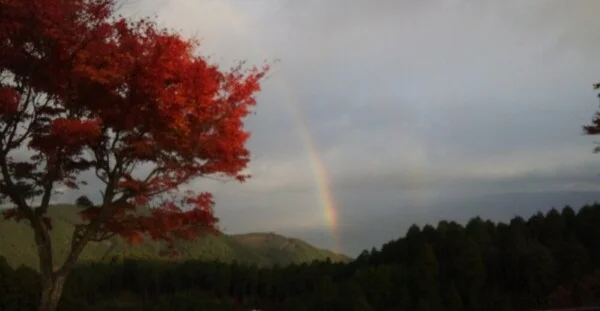
Among these, the central area is Tōtō (the East Pagoda district), the birthplace of Enryakuji and the site of its main hall, Konpon Chūdō (Main Hall).
In the National Treasure Konpon Chūdō, the “Inextinguishable Dharma Lamp,” kept alight without a single interruption for 1,200 years since Saichō, is burning.
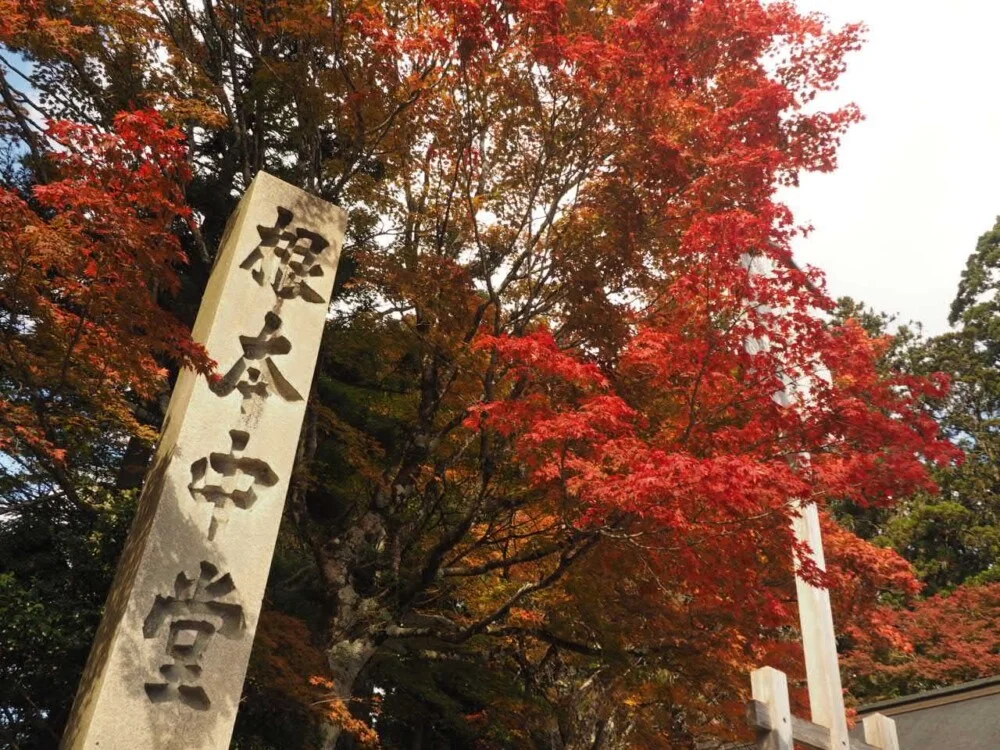
Even after Oda Nobunaga’s burning attack, they brought the flame from Yamadera in Yamagata Prefecture, where a branch light had been kept burning.
In the Tōtō (East Pagoda) area, in addition to the Kaidan-in, the Amida-dō , and the Ōshoin, there are also the Kokuhōden, which serves as the repository, the temple office, and the Enryakuji Kaikan, which is the temple lodging.
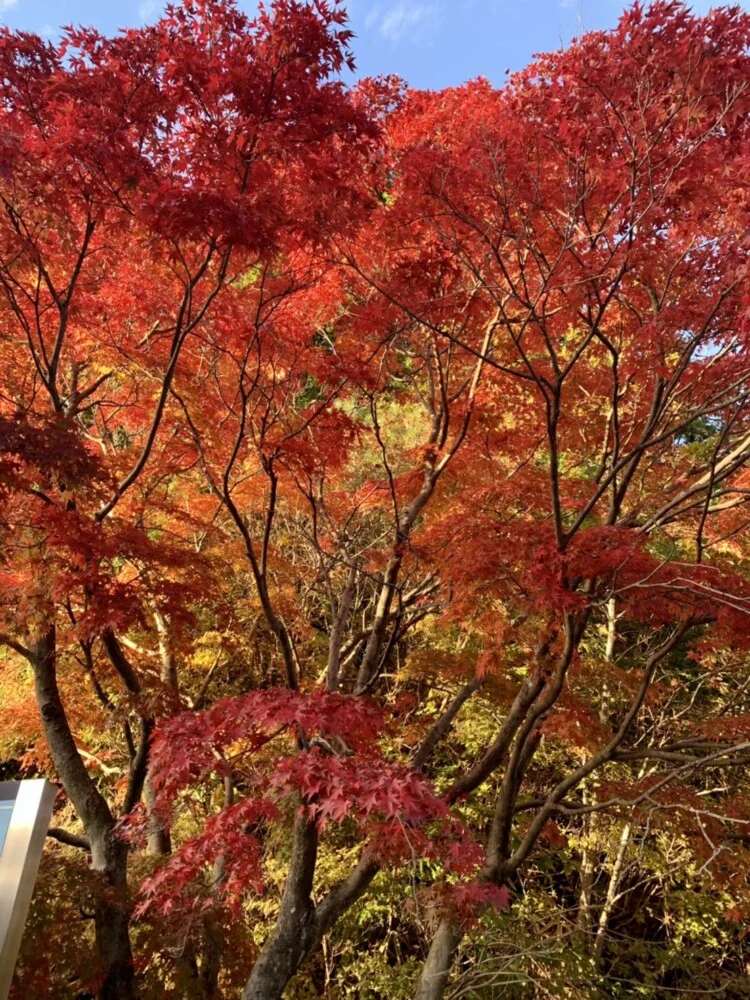
Located about 1 kilometer north of Tōtō, Saitō (the West Pagoda area) was opened next after Tōtō.
Within Enryakuji it features the oldest surviving Shakadō, alongside Important Cultural Property buildings such as the Jōgyōdō, Hokkedō, and Ruridō.
Yokawa, about 4 kilometers farther north from Saitō, was the last of the three areas to be developed, and includes Yokawa Chūdō, Eshin-dō, and the Mausoleum of Gansan Daishi. In addition to the three areas of Saitō, Tōtō, and Yokawa, Mount Hiei also has various districts known as the “Sixteen Valleys” scattered throughout.
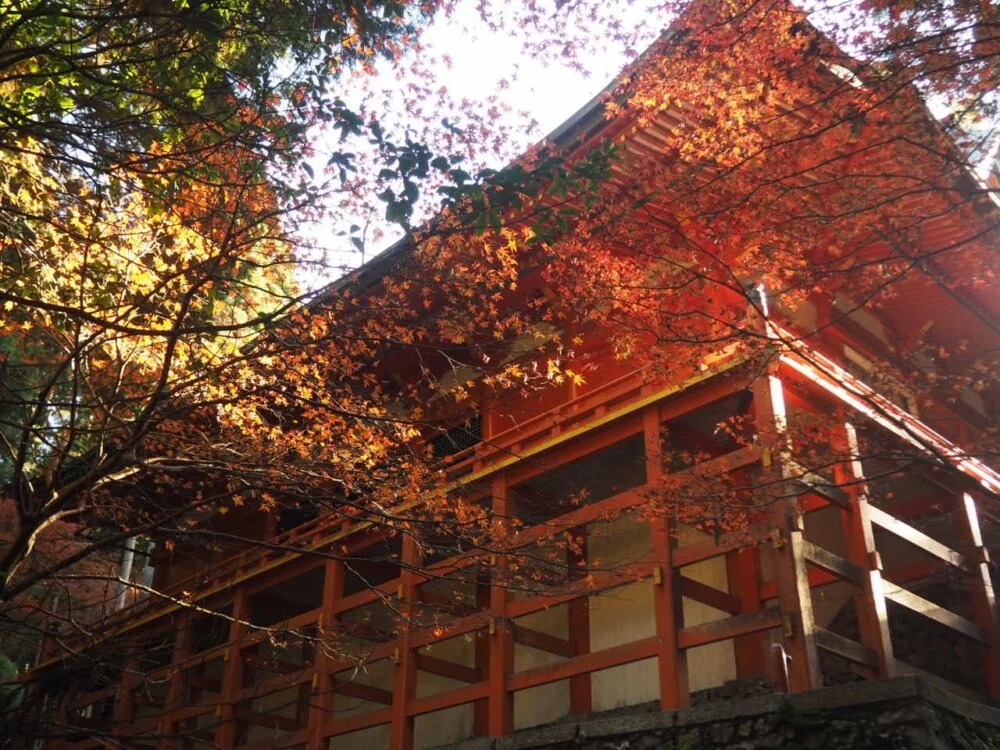
Access to Enryakuji Temple on Mount Hiei
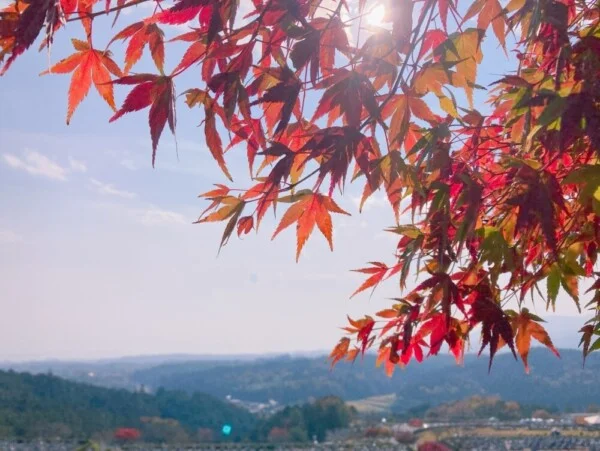
Access to Enryakuji is via the toll driveways for automobiles, as well as the cable car and ropeway that link the Kyoto side and the Ōtsu side.
Within the Mount Hiei area, the Hieizan Driveway and the Oku-Hiei Driveway run north–south through the precincts.
The Hieizan Driveway is an 8.1 km toll road connecting Tanotani Pass on the Yamanaka Crossing—between Kyoto and Ōtsu—to Enryakuji’s Tōtō (East Pagoda) area.
It opened in 1958, with Keihan Electric Railway playing a leading role.
Along the Hieizan Driveway are spots such as L’Hôtel de Hiei and Yumemigaoka, a lookout offering a sweeping view of Lake Biwa.
At these viewpoints you can enjoy beautiful autumn foliage from early November.
In addition to private cars, the Hieizan Drive Bus—a route bus linking the area around Kyoto Station with the summit of Mount Hiei—also operates.
You can enjoy the autumn colors from the bus windows as well.
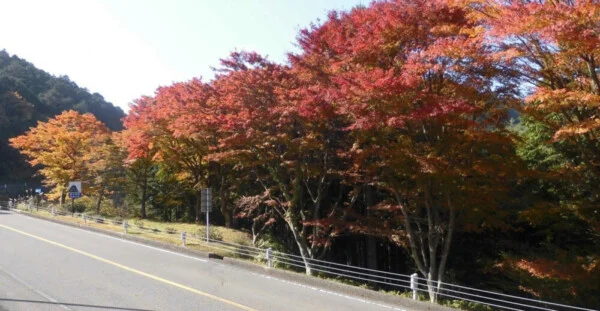
The Oku-Hiei Driveway is an 11.8 km road that runs from Enryakuji’s Tōtō (East Pagoda) — the terminus of the Hieizan Driveway — through Saitō (West Pagoda) and Yokawa to Ogi on the Ōtsu side.
It opened in 1966, eight years after the Hieizan Driveway.
Along the route are spots such as the Biwako Observation Deck, which offers sweeping views of Lake Biwa.
Because it lies farther north than the Hieizan Driveway, autumn colors reach their peak at various points from early November.
A Mount Hiei shuttle bus connecting Tōtō, Saitō, and Yokawa operates frequently.

From the Kyoto side, the Eizan Cable Car operates between Cable Yase Station and Cable Hiei Station, and the Eizan Ropeway operates between Rope Hiei Station and Hieizan Summit Station.
The Eizan Cable opened in 1925 and covers 1.3 km in nine minutes. The Eizan Ropeway opened in 1928 and covers 0.5 km in three minutes.
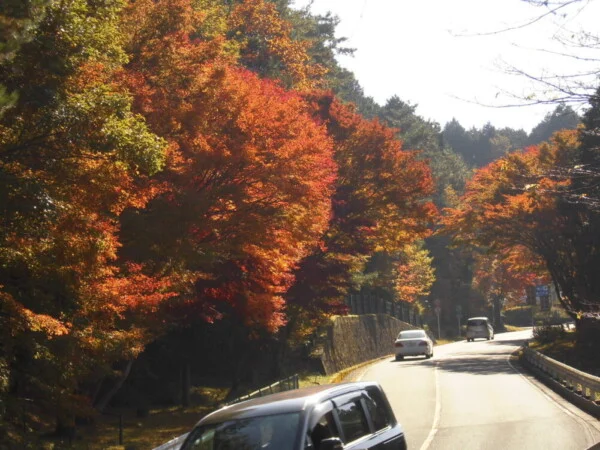
From the Ōtsu side, the Hieizan Sakamoto Cable operates between Cable Sakamoto Station and Cable Enryakuji Station.
With a total length of 2.0 km, it is known as Japan’s longest cable-car line.
There are intermediate stops at Hōraigaoka Station and Motateyama Station, where the car will stop upon request if you inform staff when boarding.
At the time of its opening in 1927, it boasted the largest scale in the Orient.
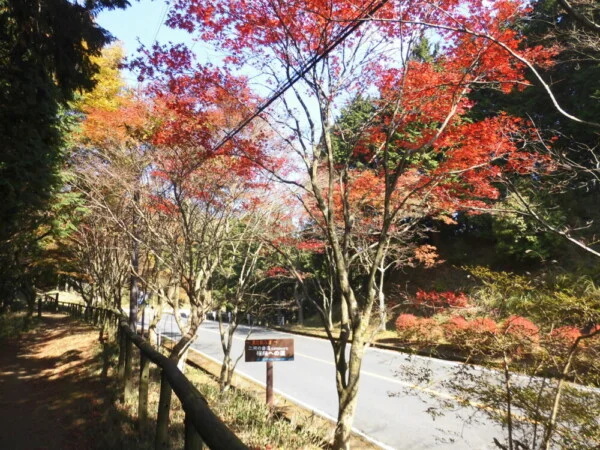
In addition to automobiles and cable cars, a network of mountain trails crisscrosses the area.
In particular, Kirara-zaka on the Kyoto side and Honzaka on the Ōtsu side are popular, and in spring and autumn they bustle with many hikers.
The Tōkai Nature Trail also runs north–south through the area.
In early November the weather is just right, and on fine days hiking up on foot is recommended.

②Jikkō-in Temple: “Enjoy cherry blossoms and autumn foliage at the same time” (Sakyō Ward)
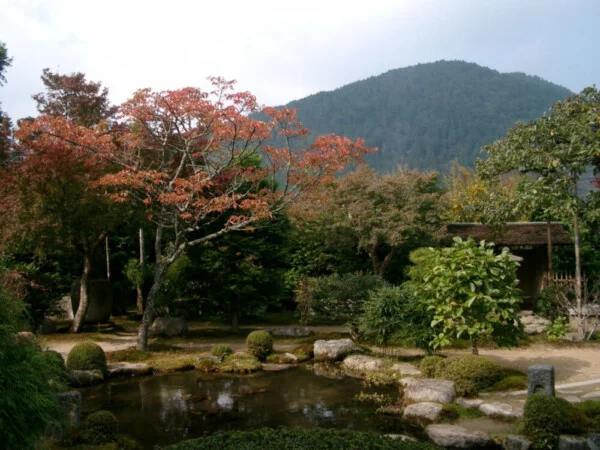
Jikkō-in Temple autumn foliage highlights
Ōhara, known as Kyoto’s hidden hamlet, is also a lesser-known spot for autumn colors.
It is especially popular with women traveling alone to Kyoto.
Because Ōhara lies north of the city center and is cooler than Kyoto proper, the leaves begin reaching their best from early November.

In Ōhara there is the renowned autumn-foliage spot Sanzen-in, but since we’re highlighting “hidden gems” this time, we’ll introduce Jikkō-in Temple.
It’s a temple located just about 100 meters north of Sanzen-in.
By all means, don’t visit only Sanzen-in—please also stop by Jikkō-in Temple, a relatively lesser-known spot for autumn colors.

Ōhara has many famous autumn foliage spots, but among them Jikkō-in Temple (Jikkōin) is a hidden gem that reaches its peak much earlier than in central Kyoto.
You can fully enjoy the autumn colors even in early November.
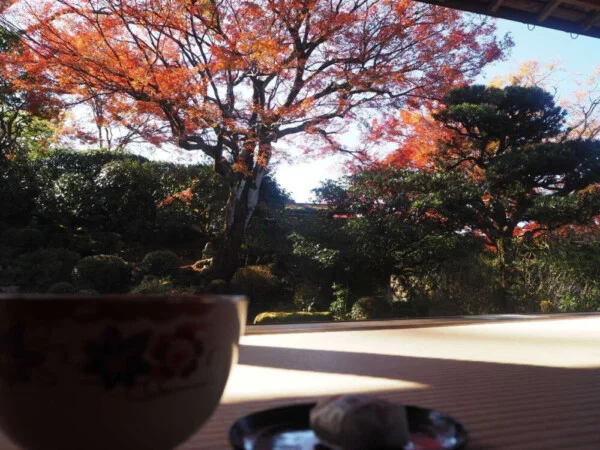
When it comes to Jikkō-in Temple, it is famous not only for its autumn foliage but also for the “Fudan-zakura” that bloom in autumn. This is a different cherry from the cultivar known as Fudan-zakura.
Although cherry blossoms that bloom in autumn are not especially rare, the garden at Jikkō-in Temple is laid out expressly on the premise of viewing them side by side with the autumn colors.
By early November they have already begun to bloom.
Savor to your heart’s content the dream “co-starring” of cherry blossoms and autumn leaves.
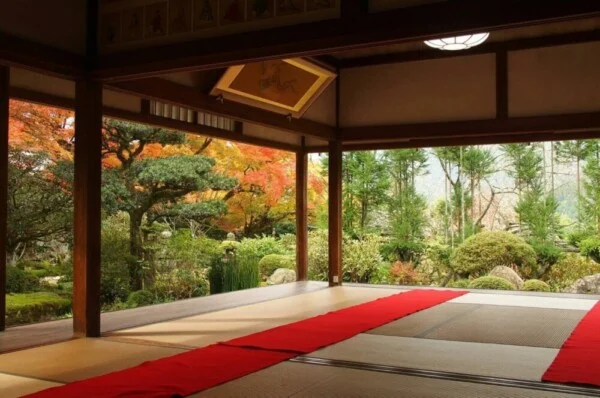
Hidden-gem rating: B
Even in Ōhara, which is famed for its autumn foliage, Jikkō-in Temple is less well known than Sanzen-in or Jakkō-in, making it a relatively hidden spot.
Even when Sanzen-in is so crowded that you can’t take your time enjoying the leaves, Jikkō-in Temple is usually not nearly as packed.
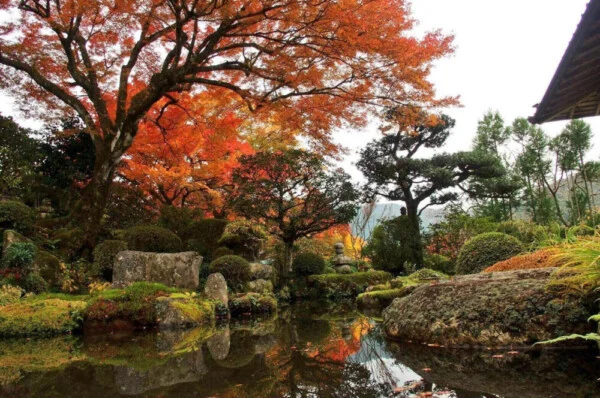
About Jikkō-in Temple
It was founded as a sub-temple of the adjacent Shōrin-in, together with Hōsen-in and others.
On the south side of the guest hall spreads Keishin-en, a pond-viewing garden centered on a waterfall and a shinji-ike (“heart-character” pond).
On the west side of the guest hall is the pond-strolling garden of the former Rikaku-in.

The Fudan-zakura planted in the garden are cherry trees that continue blooming without interruption from autumn through spring.
By early November the Fudan-zakura are already well in bloom, so you can enjoy cherry blossoms and autumn foliage at the same time.
There are other spots in Kyoto for cherry blossoms and autumn leaves, but the most famous in Kyoto is Jikkō-in Temple.

③Kyoto Prefectural Botanical Garden: “A beautiful zelkova-tree-lined avenue” (Sakyō Ward)
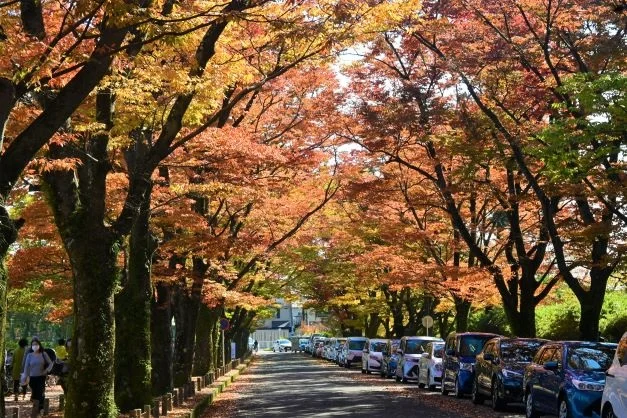
Autumn-foliage highlights at the Kyoto Prefectural Botanical Garden
It’s not only maples and ginkgo that turn color. Many different plants take on a rich palette of reds, oranges, and yellows.
At the Kyoto Prefectural Botanical Garden, where some 12,000 species are planted, many begin reaching their best from early November.
First on the list is the zelkova-lined avenue in front of the main gate.
This beautiful row of zelkovas turns red and orange starting in early November.
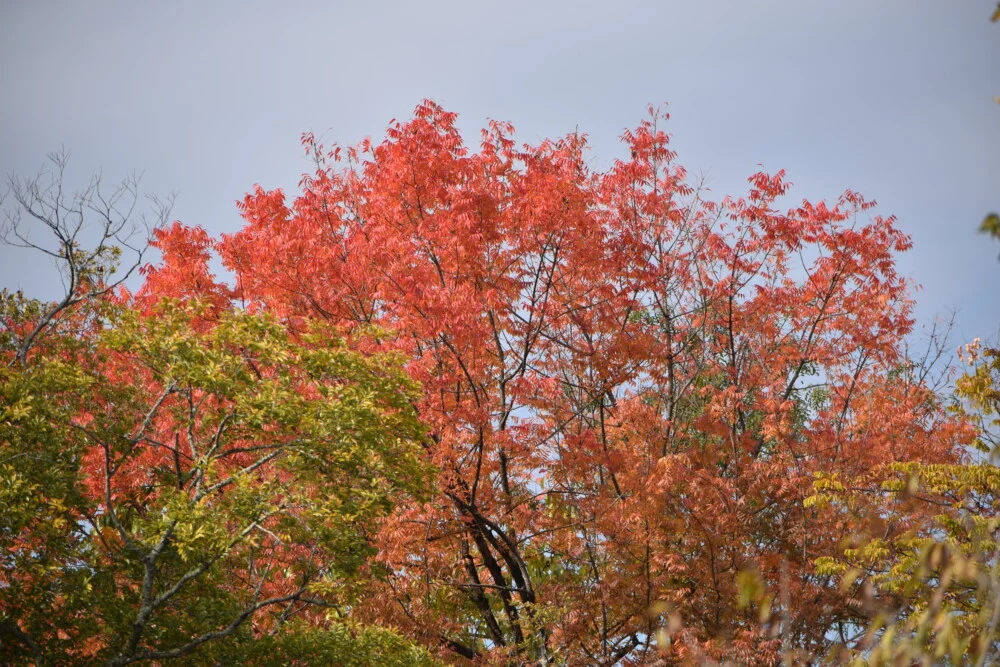
Of course, it’s not only the kind of autumn colors you can see everywhere in Japan, like those of zelkova.
Less commonly seen trees—such as ranshinboku, a China-native in the Anacardiaceae (sumac) family—also begin turning red from early November.
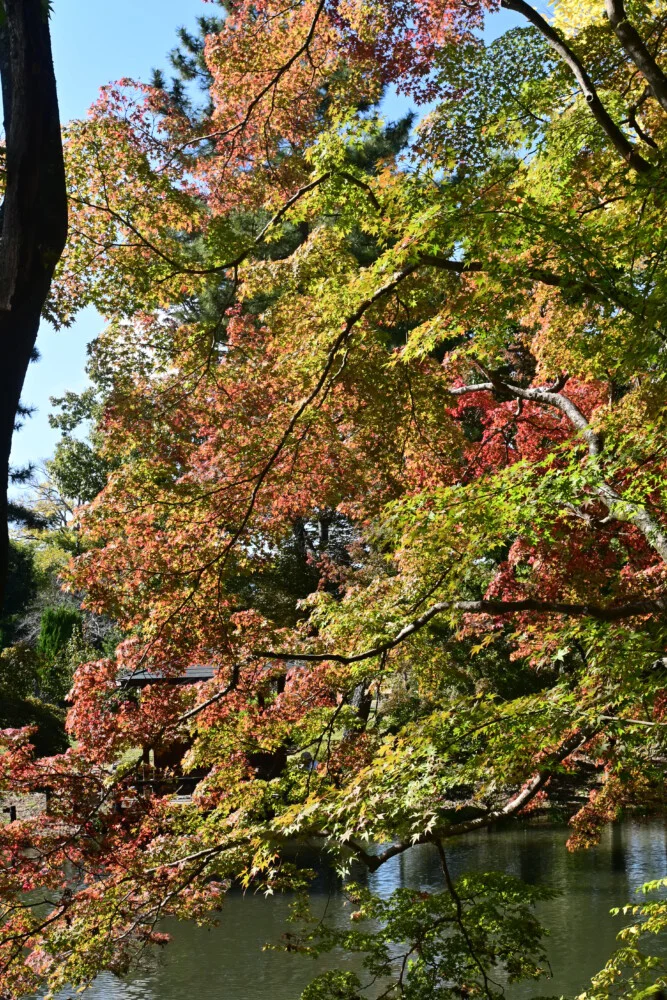
Hidden-gem rating: C
As one of Kyoto’s signature autumn-foliage spots, it isn’t exactly a “hidden” place.
However, in the sense that you can view a wide variety of red and yellow autumn colors beyond the classic iroha-momiji (Japanese maple) and ginkgo, it does have a hidden-gem aspect.
In early November, not only the autumn leaves but also the cosmos are at their best, with blooms in full splendor throughout the garden.
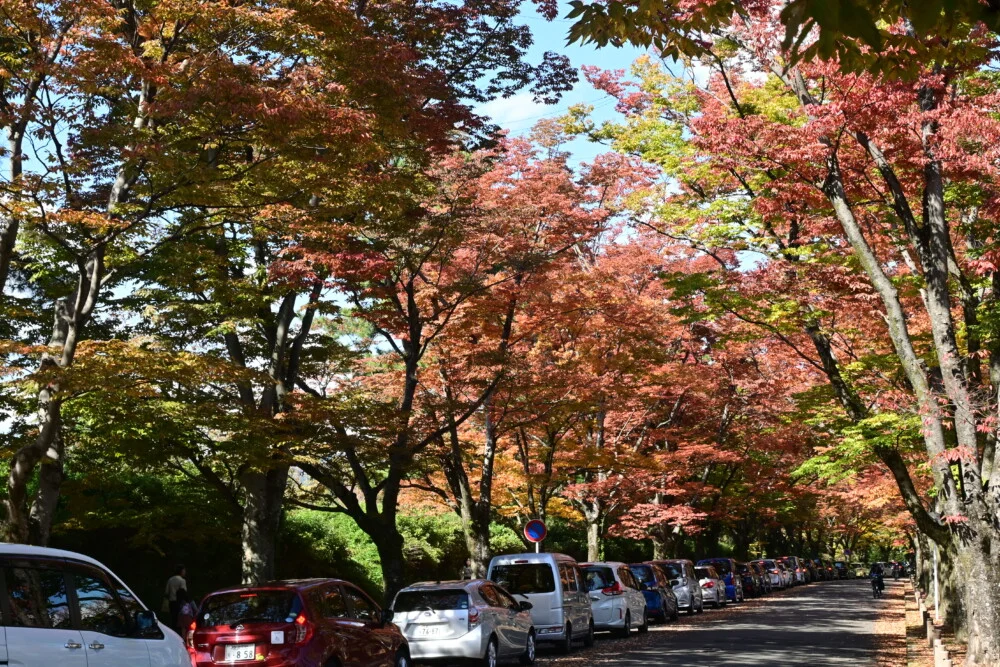
Every year on Culture Day, November 3, the “Fumin Kōryū Festa” (Prefectural Residents’ Exchange Festa) is held.
On November 3 the garden is opened free of charge and bustles with many visitors.
At the 2025 Festa on Monday, November 3 (a national holiday), there will be events such as a special concert by the Kyoto Prefectural Police Band & Color Guard. It is typically very lively, especially with families.
④Kifune Shrine: “Gorgeous ravine foliage at the site famed for riverside dining” (Sakyō Ward)
Kifune Shrine autumn-foliage highlights
When people think of Kifune, they think of its famous summer kawadoko riverside dining, a very popular sightseeing draw.
Because the platforms set up over the river operate roughly from May to September each year, you can’t enjoy kawadoko cuisine in autumn; however, in fact Kifune is not only about summer—the autumn leaves here are beautiful as well.
As it is also known as a summer retreat for Kyoto, the temperatures are lower, and the foliage typically reaches its best from early November. That said, because it is located in a ravine, the peak viewing period can sometimes be pushed back to around mid-November.
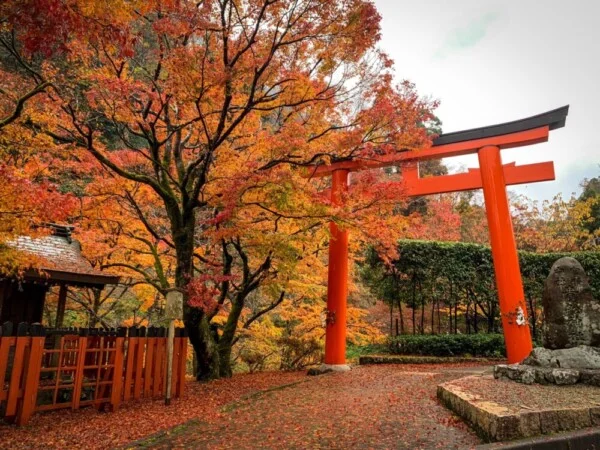
Kifune Shrine has three sanctuaries arrayed along the ravine carved by the Kifune River, from downstream to upstream: Hongū (Main Sanctuary), Yui-sha (結社), and Okumiya.
Visiting all three is called “Sansha-mōde” (the three-shrine pilgrimage) and has long been popular.
The Hongū, located farthest downstream, is—as its name suggests—the core of Kifune Shrine.
In Tenki 3 (1055) the Hongū was moved to its present site. About 300 meters upstream along the Kifune River from the Hongū stands Yui-sha, which is also referred to as the Naka-miya (“Middle Shrine”). As the name indicates, it is famous for blessings of enmusubi (matchmaking).
Roughly 400 meters farther upstream from Yui-sha is the Okumiya. Until the main sanctuary was relocated, the Okumiya was the center of Kifune Shrine.
For the Sansha-mōde, the usual order of worship is Hongū → Okumiya → Yui-sha.
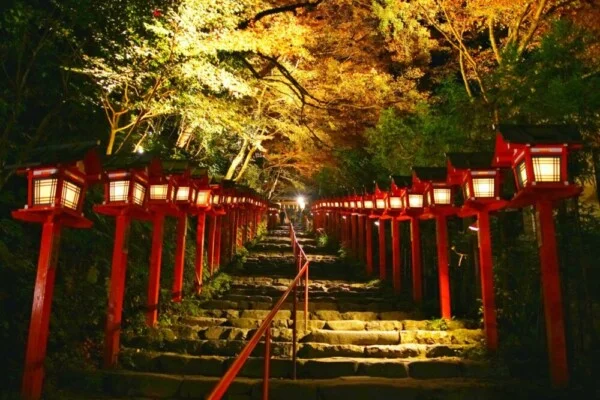
In Kifune, a fall foliage light-up called “Kifune Momiji Tōrō” is also held.
The steps and shrine buildings of Kifune Shrine’s Hongū are illuminated together with the autumn leaves.
Andon lanterns are set up throughout the Kifune streetscape, bathing it in beautiful light.
At the same time, the Eizan Railway runs a “Momiji no Tunnel” event from Kibuneguchi Station.
The rows of maples arching over the tracks are lit up, and as the train passes through, the interior lights are turned off.
It’s a uniquely Kifune way to enjoy the autumn colors.

Kurama-dera, which adjoins Kifune Shrine, also reaches its peak autumn colors around the same time.
It makes for a bit of a hike, but we recommend visiting Kifune Shrine and Kurama-dera together.
Hidden-gem rating: C
Kifune is a rare summer sightseeing spot in Kyoto. While traffic restrictions on passenger cars are imposed in summer, no such restrictions are in place in autumn.
In the sense that it isn’t widely known as an autumn destination, it can be considered a hidden gem.
That said, Kifune is still one of Kyoto’s big-name destinations, so it is by no means free of tourists.
If you’ve enjoyed kawadoko riverside dining in Kifune in summer, do visit Kifune once during the autumn foliage season as well.
You can’t enjoy kawadoko dining itself then, but it’s nice that you can still savor the cuisine from the kawadoko restaurants.
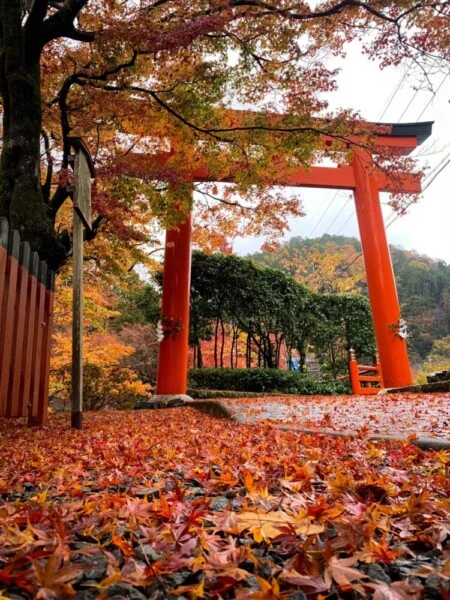
About Kifune Shrine
The Kifune area, as the headwaters of the Kamo River that flows through Kyoto, has long been a focus of devotion.
Records mentioning Kifune Shrine appear at least as early as the 7th century.
The enshrined deity is Takaokami no Kami, who governs water, and this shrine is the head shrine of the roughly 500 Kifune Shrines nationwide.
As the source of the Kamo River and a water deity, rain-invoking rites have been conducted here in times of drought.
In the Heian period it was counted among the Twenty-Two Shrines (Nijūnisha) and received special recognition from the imperial court.
Note: the place name 貴船 is usually read Kibune, but the shrine’s official reading is Kifune.
For sightseeing in Kyoto, leave it to MK’s chartered sightseeing taxi.
Your private driver is a Kyoto expert who handles both transport and guiding.

